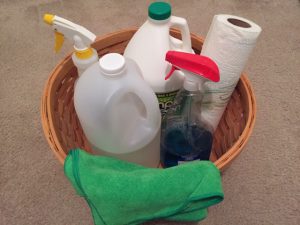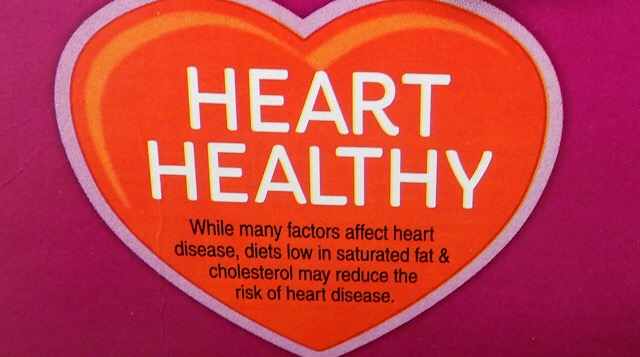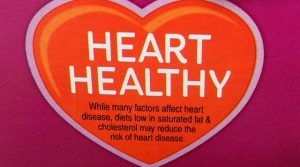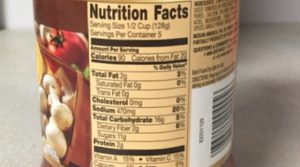
by Kendra Hughson | Jul 9, 2019
It’s still the dog days of summer so it’s hard to believe that the first day of school is right around the corner. Soon, the kids will be wrapping up the lazy days of summer and the fun of summer camps and family vacations to prepare for the back to school routine. Making school supply shopping a special event helps children get excited and ready for the new school year. Back to school costs can add up so be sure to have a plan.

Plan ahead for back to school savings. Photo Credit: Kendra Zamojski
- Create a list of back to school supplies and clothes. Check with your local school for a current list of required school supplies. Remember to include clothes, shoes, sports equipment, extracurricular activity supplies, and other school fees. Inventory items that you may already have from the last school year. Identify what items might be outgrown or need to be replaced and note what items are still usable.
- Determine a budget and stick to it. Involve children in creating a budget and making purchasing decisions to help them learn financial management skills. Shopping with children is great time to talk about needs versus wants and how to make buying decisions to stay within a budget. Children might be able to contribute some of their own earned money to buy school supplies or clothing.
- Take advantage of the Back to School Sales Tax Holiday. The State of Florida has declared August 2 – 6, 2019 as a Back to School Tax Holiday. Eligible items include: Clothing, footwear, and certain accessories selling for $60 or less per item, certain school supplies selling for $15 or less per item, and Personal computers and certain computer-related accessories selling for $1,000 or less per item, when purchased for noncommercial home or personal use. For a complete list of eligible items visit the Back to School Tax Holiday site: https://revenuelaw.floridarevenue.com/LawLibraryDocuments/2019/06/TIP-122444_TIP_19A01-03_FINAL_RLL.pdf
- Many stores offer back to school sales and deals. Grab sales flyers and shop around for the best deals. Thrift stores and consignment shops are some other alternatives.
For more information, contact your local UF/IFAS Extension office: https://sfyl.ifas.ufl.edu/find-your-local-office/
For more information on back to school topics:
http://blogs.ifas.ufl.edu/franklinco/2018/08/02/back-to-school-survival-tips/
https://fyi.extension.wisc.edu/news/2015/08/05/planning-for-back-to-school-shopping/

by Kendra Hughson | Jun 20, 2019
I know I am not the only one fed up with the robocall madness. I no longer answer calls from numbers I do not recognize, and I block known scam numbers. These tactics don’t stop the incoming calls, though. I am often left with a voicemail box full of spam. Occasionally, I miss calls from people I know. More often, my voicemail is full of insurance, credit card, technology support, and IRS scams. The scammers are sophisticated, and some people have fallen victim to these fraud schemes. The best strategy is to hang up on these calls.

Check with your cell phone carrier for call filtering services. Photo Source: Kendra Zamojski
Here are some steps you can take to stop the madness:
- Sign up for the Do Not Call Registry at https://www.donotcall.gov/. You can also report unwanted calls on this website. Adding your phone numbers to the Do Not Call list doesn’t stop some organizations from legally contacting you and, of course, unscrupulous callers don’t care about the Do Not Call list.
- Never give out your personal information over the phone. Never give your Social Security Number, account numbers, passwords, or other sensitive personal data over the phone.
- Check your mobile phone for built-in features. You can use phone number blocking, do not disturb, or other features to stop the unwanted robocalls.
- Check with your mobile phone carrier to see what services they offer. Some carriers offer call filtering apps for free or for a small fee.
- Download a third-party call filtering app. Some apps are available for free and others have one-time or monthly fees. Comparison shop to find the solution that best fits your needs.
For more information contact your local UF/IFAS Extension Office: http://sfyl.ifas.ufl.edu/find-your-local-office/
Sources:
How to Stop Unwanted Calls: https://www.consumer.ftc.gov/features/how-stop-unwanted-calls

by Kendra Hughson | Apr 10, 2019
Just like your home, finances need regular “cleaning” and maintenance. Plan time this spring to focus on financial tasks. A little time spent getting organized and reviewing your financial habits helps keep your financial goals on track.

Spring clean your finances by getting organized. Photo Credit: Kendra Zamojski
Get Organized
A good spring cleaning starts with getting organized. Sort through important papers. Decide what you need to keep and what can be shredded or tossed. File your important papers. If you don’t have a home filing system, now is a great time to set one up. With an organized filing system, you can locate important documents quickly and easily when needed. Use UF/IFAS Extension’s Financial Recordkeeping resource to know what to keep and what to toss.
Track Your Spending
Update your spending plan by reviewing your financial goals. Check your financial progress by tracking your spending. Where is your money going? Is your money going toward your goals? Get the whole family involved in recording expenditures for a month. Track expenses by writing down every expenditure on a piece of paper. Alternatively, find a box and place all your receipts in it, being sure to include any money spent even if you didn’t receive a receipt. At the end of the month, review your spending record and look for places where you can cut back. UF/IFAS Extension’s Building a Spending Plan: All Six Steps is a great tool to create or update your spending plan.
Review Your Credit Report
A good credit history saves money through lower interest rates and makes it easier to get credit when needed. Annually, review your credit report from each of the three major credit bureaus. By law, consumers are entitled to one free copy of their credit report every 12 months from Equifax, Experian, and TransUnion. Get free copies of your credit reports at www.annualcreditreport.com. Consider rotating through the three bureaus every few months so you can check your credit report throughout the year. Review your credit report for errors and fraudulent activity. Also, review any negative information that could impact your credit and credit score.
Credit scores are based on the information contained in your credit report. You can obtain your credit score from www.myfico.com for a fee. Many credit card companies offer free FICO scores through their online billing websites. Companies like Credit Karma and Credit Sesame offer free credit score estimates but these sites also include advertisements for financial and other products. Check out UF/IFAS Extension’s You and Your Credit Series.
Make your finances a part of your springtime cleaning routine. A little time spent getting organized and reviewing your spending plan and credit reports will go a long way toward keeping you on track toward your financial goals.

by Kendra Hughson | Mar 15, 2019
I love spring cleaning. Well, I love spring. I wish someone else would do the cleaning. It does feel nice to have everything clean and sparkling for those sunny spring days. According to a 2018 survey by the American Cleaning Institute, nearly 76% of households engage in spring cleaning each year. These spring cleaners report deep cleaning and clearing clutter as the top two reasons for this annual springtime spruce up.
If you want to join the springtime cleaning craze but aren’t sure how to start, here are a few ideas:
Clear the Clutter

Get ready for the springtime spruce up. Photo credit: Kendra Zamojski
Personal belongings hold a host of memories and other emotional attachments. This means stuff can accumulate in closets, drawers, cabinets, and other places. In my own life, I try to get rid of items I haven’t used in the last year. Others may use different criteria. Pick a closet, cabinet, or other area to de-clutter and start by sorting. Separate items into boxes or baskets labeled: Keep, Donate/Sell, Recycle, Trash. This is also a great way to help children make decisions about their stuff. It always makes me feel better to clear the clutter and organize a messy cabinet or closet.
Deep Cleaning
Deep cleaning involves going through each room and cleaning it to a higher standard or reaching dirt that might get missed in a regular cleaning routine. On deep cleaning days, wash window and shower curtains, wash windows and mirrors, scrub floors, wash or wipe down walls, baseboards, and doors. Dust or wipe down light fixtures, ceiling fans, furniture, and shelves. Other tasks might include vacuuming under furniture, cleaning the carpets and rugs, and cleaning under and behind appliances.
Spring cleaning takes a little extra elbow grease compared to the regular cleaning routine. If you find this overwhelming, start small by choosing a room or even smaller by choosing a closet or cabinet. Once you see the difference, it will motivate you to tackle the next job.
References:
Healthy Homes: Dealing with Household Clutter. 2015.
Available at: https://secure.caes.uga.edu/extension/publications/files/pdf/C%201067_1.PDF
Spring Cleaning Tips
Available at: https://lancaster.unl.edu/home/articles/2005/springcleaning.shtml

by Kendra Hughson | Feb 28, 2019

Not all front of the box labels are approved and defined by the FDA. Learn what health claims are approved for use. Photo Source: Kendra Zamojski
For those of us who read food labels, grocery shopping can be a confusing maze of health claims enticing us to make what look like healthy choices. But, are these choices really healthy? When I noticed that my shampoo was gluten-free, I decided it was time to refresh my knowledge on food and product labels and figure out what is behind the label.
The Nutrition Labeling and Education Act of 1990, regulated by the Food and Drug Administration (FDA), requires the labeling of most food and sets consistent standards for certain nutritional content and health claims. Much of the consistent information we find on food products is the result of this regulation. Food products must contain the Nutrition Facts panel, use common household measurements for serving sizes, and clearly identify any food allergens. Ingredients must be listed in descending order by weight using common names and clearly identifying certified color additives such as “FD&C Red No. 40” or “Red 40.” Raw vegetables, fruits, and seafood are exempt from nutrition labeling requirements.
The FDA regulates the use of the word “healthy” on food products. To use this term, a food product must be low in fat and saturated fat, low in cholesterol, contain less than 480 mg of sodium, and contain at least 10% of the Daily Value per serving for vitamins A, C, calcium, iron, protein, or fiber. Exceptions include raw fruits and vegetables; or a single ingredient or mixture of frozen or canned fruits and vegetables; and enriched cereal-grain products. Seafood and meat products and main dishes or meals have slightly different regulations to meet the “healthy” criteria.
The United States Department of Agriculture (USDA) regulates and enforces the use of “certified organic”. To use the USDA certified organic seal, the final product must follow strict production and handling standards. Products with this seal have completed a certification process meeting standards in soil quality, animal raising practices, and pest and weed control, and certifying that they have not used synthetic fertilizers, sewage sludge, irradiation, or genetic engineering.
The USDA also regulates labels for meat and meat products. “Certified” means the USDA has officially evaluated a meat product for class, grade, or other quality characteristics (e.g., “Certified Angus Beef”). Products labelled “natural” must not contain artificial ingredients, added color, and must be minimally processed. The label must explain the use of the word “natural” such as “no artificial ingredients; minimally processed”. Meat and meat products claiming “no hormones added” cannot be used on the labels of pork or poultry unless it is followed by a statement that says “Federal regulations prohibit the use of hormones.” Beef products can make the claim if the producer has documentation showing no hormones have been used in raising the animals. Meat and poultry producers must also provide appropriate documentation that animals were raised without antibiotics to use the label “no antibiotics added”. The term “Chemical free” is not allowed on labels.
Not all front-of-the-box marketing terms and labels are defined by the FDA. When reading labels and deciphering health information, watch out for misleading terms and health claims that seem to good to be true. Learn what health claims are approved and which ones are not. Remember, packaging is designed to attract your attention and entice you to make a purchase. Read the Nutrition Facts panel and ingredients list to make the healthiest choice for you and your family.

Read the Nutrition Facts panel to make healthy food choices. Photo Source: Kendra Zamojski
Here are some other approved labels:
Juice: Juice must be 100% juice. If less than 100% juice, the product must use the terms cocktail, beverage or drink.
High or Excellent Source: Contains more than 20% of the Daily Value per serving.
Good Source: Contains 10-19% of the Daily Value per serving.
Lean: Seafood or meat contains less than 10 g total fat, 4.5 g or less saturated fat, and less than 95 mg cholesterol per serving.
Extra Lean: Seafood or meat products contain less than 5 g total fat, less than 2 g saturated fat and less than 95 mg cholesterol per serving.
Fiber Claims: If a product makes a fiber claim but the food is not low-fat, then the label must state the total fat per serving.
Antioxidant Claims: The nutrients must be included as part of the claim for example, high in antioxidant vitamins C & E.
Whole Grain and Heart Disease Claims: Food product contains 51% or more whole grain ingredients.
Gluten-free: This is a voluntary label for food products that are either naturally gluten free or gluten (e.g., wheat flour) has been removed to less than 20 ppm.
References:
A Food Labeling Guide: Guidance for Industry. 2013. Available at: https://www.fda.gov/downloads/food/guidance%20complianceregulatoryinformation/%20guidancedocuments/foodlabelingnutrition/foodlabelingguide/ucm265446.pdf
McEvoy, M. Understanding the USDA Organic Label. 2016. Available at: https://www.usda.gov/media/blog/2016/07/22/understanding-usda-organic-label
Questions and Answers: Gluten-Free Food Labeling Final Rule. Available at: https://www.fda.gov/Food/GuidanceRegulation/GuidanceDocumentsRegulatoryInformation/Allergens/ucm362880.htm
Meat and Poultry Labeling Terms. Available at: https://www.fsis.usda.gov/wps/portal/fsis/topics/food-safety-education/get-answers/food-safety-fact-sheets/food-labeling/meat-and-poultry-labeling-terms/meat-and-poultry-labeling-terms
Family and Consumer Sciences Agent III
Interim -Northwest District
155 Research Road, Quincy, FL
Office: 850-875-7135
Email: hughson@ufl.edu











